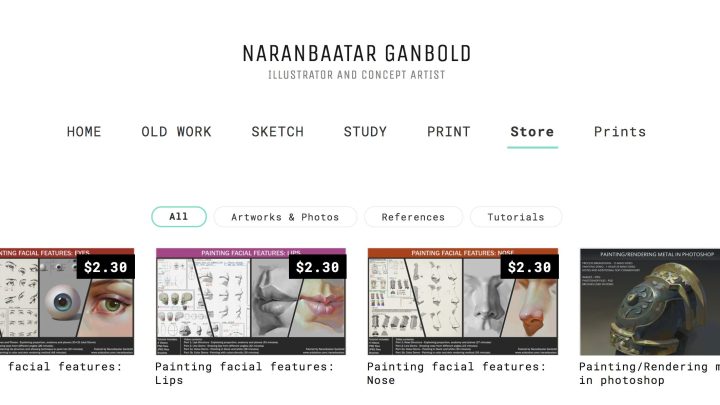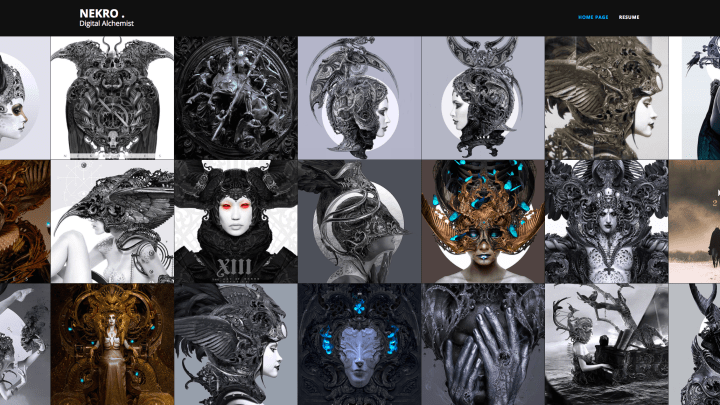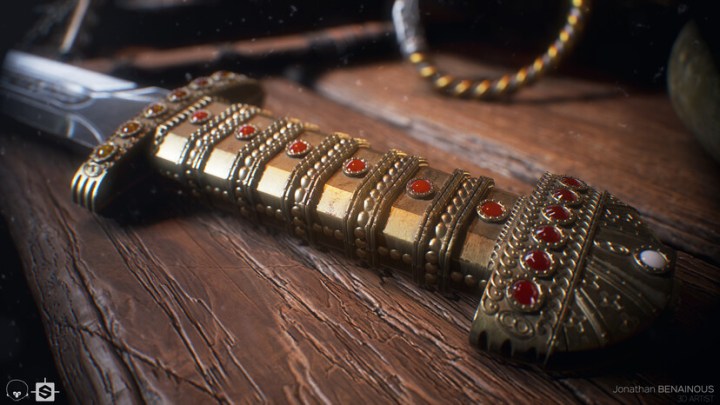Wacom Presents: Got Time on Your Hands? Tips to Level Up Your Online Presence to Boost Your Art Career
WACOM PRESENTS – A Work From Home Series
Presented by Wacom, learn tips and tricks from artists and experts on how they find inspiration and motivation while working from home. Check out ArtStation Magazine weekly to discover new featured artists and get inspired. This week’s featured artist is Kiri Leonard.

Kiri is a fantasy artist, storyteller, and creator from Denmark, the oldest Kingdom in Europe. In 2010, she immigrated from Denmark to New York City, in the US, to pursue a career in Illustration at Pratt Institute. She now works as a full-time artist and creator out of her studio in Austin, TX. She has been awarded for her work on The Green Witch Tarot by Llewellyn Worldwide, as well as her body of artwork at GenCon in 2019.
She finds inspiration in folklore, history, philosophy, nature, and life around us. She is particularly passionate about illustrating and writing her own two illustrated novel projects: Montague Mouse and Locke the Legend.
You can follow her on ArtStation and at KiriLeonard.com
With the spread of the pandemic, conventions, art shows, and events are having to close their doors for the year. This is understandably troubling for artists who have their income heavily tied to these events.
So, what can we do? It is time to refocus, level up our online presence so we can connect with our fans online. Let them know you are still making art, and it’s available for purchase online.
I’m a professional, full-time artist, who works as a freelance illustrator but also as an indie artist. As a freelancer, I have worked for companies such as Paizo, Wacom, Hit-Point Press, and more.
My income is roughly split 50/50 between those career paths. What does it mean to be an indie artist? It means you’re working on your work and selling it directly to your fans and collectors. You can do this at conventions, but you can also do it online.
As an indie artist, I am writing and illustrating my own two passion projects: Locke the Legend, and Montague Mouse. I’m also maintaining a YouTube channel, a Patreon, an Instagram account, and an online shop. I’ve previously run two successful Kickstarters to self-published my projects Year of the Unicorn and the Heretofore Undisclosed Sketchbook.
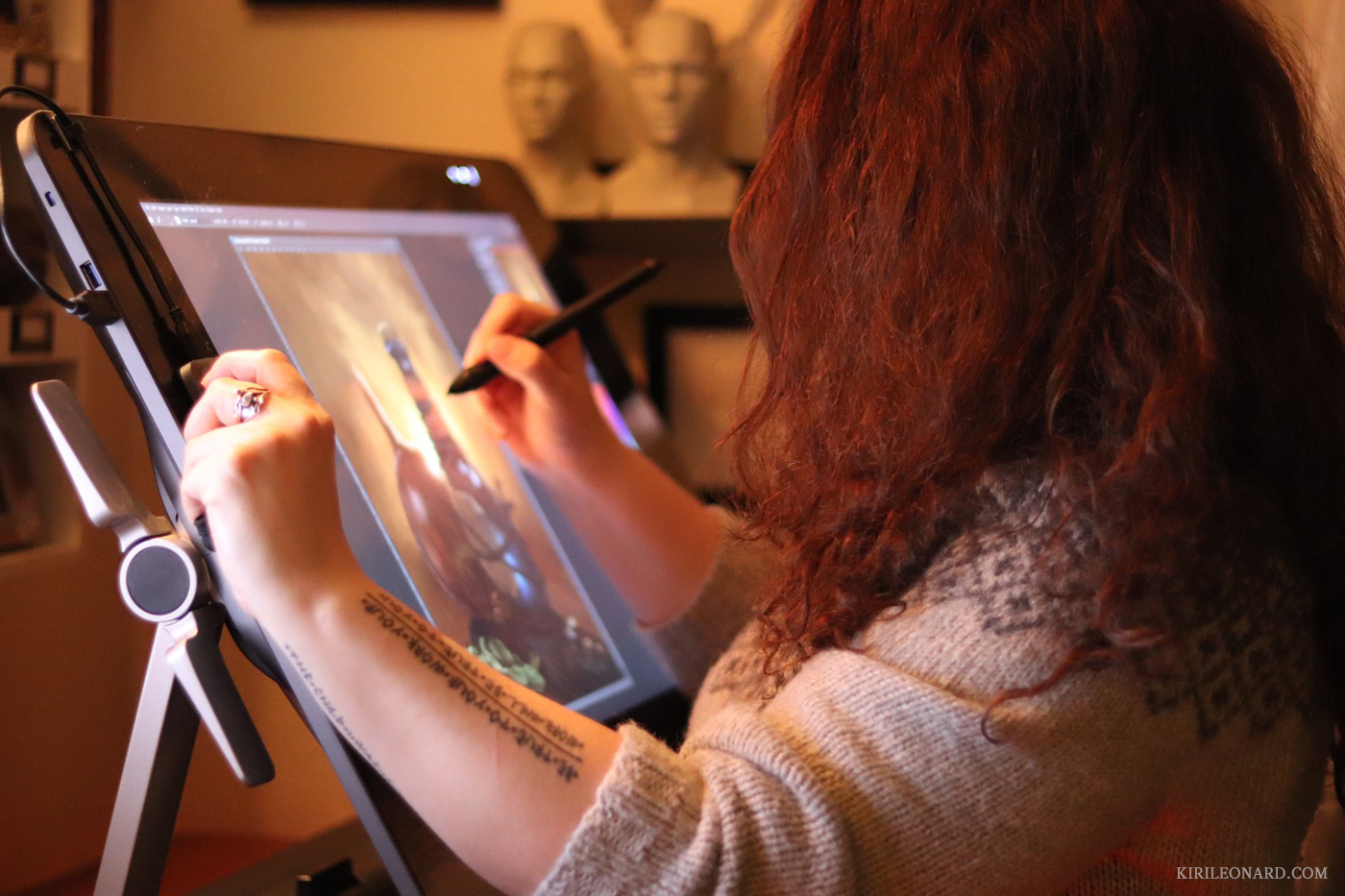
I firmly believe that the path to having a sustainable art career requires that you diversify your income so that you’re not 100% dependent on one revenue stream. This means that when things that are out of your control occurs, you have other options to press on with your work and still be okay.
With these things in mind, I am going to share some tips with you that I have utilized to build my career. I hope these will be helpful to you, and that you’ll find some ideas that you can use to level up your online presence and grow your career.
Hold your Horses – One Thing at a Time!
As an artist in this age of the internet, it’s no longer enough to just be good at art. You now have to be your team. You’re in charge a 100%: Not only of making the work, but also presenting it to the world in the most attractive manner possible. You have to be the artist, the marketing team, the social media manager, the agent, the accountant, the stylist, the photographer, the videographer, and so on… I get it. It gets exhausting!
But – before we dive in too deep, I want to encourage you to be gentle with yourself. If you’re trying to tackle everything at once, it will get overwhelming, so pick just one thing to concur. Once you have that in place and working well, you can move on to the next. There is an ebb and flow here, don’t try to do everything at once and when you tire out. The most important thing is just to make good art. Everything else comes second.
Presentation Matters
Whether you’re aiming to be a book illustrator, a fine artist, concept artist, indie artist, sculpture, writers, or whatever else you might think up – presentation matters. How you share your work, how you speak about it, and the way you present it to the world helps to create the first impression people get when they see what you have made.
Put some thought into your presentation. Some people are naturally good at creating a strong presentation; others (like me) are not and need to spend some time studying how to do this. If presentation isn’t your strong game, I urge you to take the time to learn.
It encompasses a lot of things – just to mention a few:
- The look of your website
- The look of your portfolio
- The photos you share on your social media,
- The way you arrange your drawing sand sketches on a page,
- The way you design your art (framing/display),
- Digital file layouts,
- or the way you style art for photography,
- How you package your work when sending it to customers,
- How you set up your shop listings and so on.
Presentation makes an impact everywhere. It creates the overall brand of your artwork. It lets people know how (or if) you care about your work, and if you don’t care – why should they? Repeat after me this time: Presentation matters!
How do you Learn How to Make an Excellent Presentation?
You must be proactive. Study what brands or other artists that you enjoy are doing. Just look at how ArtStation has their platform and social media organized or look at how Wacom packages their products (you can find so many unboxing videos on YouTube). Look at how Kim Jung Gi has set up his website and shows his products, or James Jean, or JAW Cooper, or Loish, or Naomi VanDoren to mention a few.
There are so many wonderful artists and brands out there who are doing a phenomenal job. Find your favorites, that resonate with how you would like to be seen. Then closely observe them and learn from what they are doing. You can also go beyond the art industry to learn; is there a clothing brand you enjoy? Or a food blogger? How are they sharing their work with the world?
Tip: Make a private Pinterest board and pin images that align with the aesthetic you would like for your brand. Do you like a light and airy feel? Or something warm and cozy? Maybe you like something sleek and elegant, or something more rustic? How do you want people to feel when they see your artwork? Spend time with these images and pull inspiration from them to up your online presentation.
You can also pick up some books on branding. I am currently enjoying two books by Fiona Humberstone called Brand Brilliance and How to Style Your Brand.
Your Website is Your Umbrella
Look at your website as your online home where people can come and enjoy your artwork; it’s also an umbrella for your brand where your fans can discover everything you’re about. If you’re working on multiple projects, make it a beautiful hub to learn more about everything you do and to guide people to where to purchase your work.
I’m an advocate for artists having their own website because when social media sites change their algorithm or suddenly shut down overnight. Your website is your insurance that the people who love your work can still find it. Website templates have become so common, that it is relatively easy to learn how to set up a website these days (Skillshare and YouTube have so many tutorials). Squarespace, for instance, has an easy to use format that also offers shop features.
If you don’t have a website for your art, now is a great time to set one up! Have fun with it; this is going to be YOUR space where your art can live and breathe. Again, look at artists who inspire you to see how their websites are done.
When you design your website, make sure you guide people through each section, always end a page with a call to action to either visit another section or maybe connect with you on social media, or sign up for your newsletter. Your website is your personal gallery, a place you can truly make your artwork shine and tell your story.
If you’re not comfortable with web design, at the bare minimum set up a simple website that has 12-16 of your very best pieces on the front page, and an about section that tells us about who you are, and why you’re passionate about your work, with links to your social media.
And remember our first point, presentation matters! Make the images on your website beautiful; make sure your artwork is presented in an easy to view manner. Write a little bit about each piece, so you can draw people further into the world you’re creating. If you work traditionally, make sure you take beautiful photos of your artwork that are properly lit.
Next step, update your Portfolio
When your website is up and running, it’s a great time to go visit all on your online portfolio sites (ArtStation, Behance, DeviantArt, Tumblr, where ever you post your work) and make sure all are updated. This includes the bio section in each. Don’t leave the bio empty! Make sure your portfolio only shows your best and most recent work.
You can draw people in further by also showing snippets of how the artwork was made, what your inspiration was, what the sketches looked like. Remember, you are creating the story of your art. This is especially a benefit on pages like ArtStation where you can upload multiple photos and really show people your creative process.
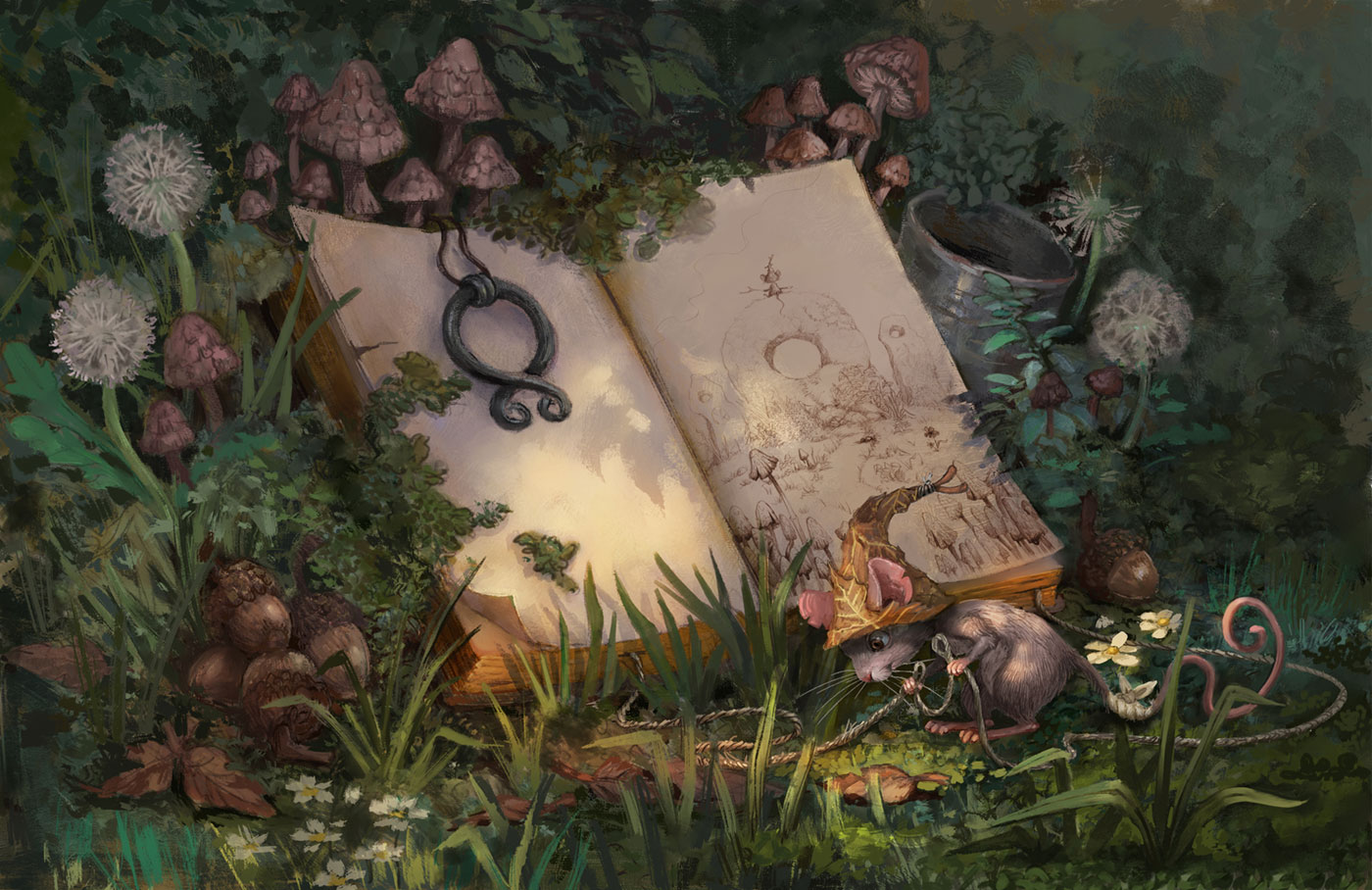
Dust Off Those Social Media Accounts
Now that your website and portfolio are looking shiny and beautiful, it’s time to dust off the social media accounts and make a plan of attack. You’ll have to do some research here. Each platform is a little different in how people interact with what’s posted, so you’ll have to find the one that resonates the best with the type of art you do.
When you post to social media, don’t leave an empty caption or an ‘I had so much fun making this piece!’ caption. It does nothing for you. The caption presents a wonderful opportunity for you to engage with your audience. Talk to them about why you made the artwork, which emotions were at play, what was the inspiration? What are you trying to build? Why is this art worth their time and attention?
As human beings, we are wired to love a good story, utilize this to your benefit when writing your captions. What is the story behind your art and what you’re making?
I like to address my social media accounts as a sort of artist magazine. It’s a snapshot of everything that happens in my art studio, it’s a way for my audience to visit my studio, to connect with the artwork and get to know the artist, without actually visiting.
Next tip is to do some hashtag research if you’re using platforms like Instagram and Twitter. YouTube is packed with videos on how to do this well, and later.com has a great blog with suggestions on improving your Instagram. Try to keep from using hashtags that have over 400k posts; they’re usually so busy you’ll get drowned out. Smaller hashtags (10k to 100k) generally have better traction. Get specific with your hashtags too, hashtags like #art won’t do you much good; it’s too big and too general.
Next set up a posting schedule to make your own life more manageable. It’s easy to end up wasting hours on social media. To avoid this, scheduling posts ahead of time can be beneficial. Maybe you post at noon on Tuesdays and Fridays. That way, you can plan content ahead of time, and it frees you up to focus on other tasks.
Here are a couple of inspiring artists to look at and learn from when it comes to Instagram:
https://www.instagram.com/devinellekurtz/
https://www.instagram.com/jawcooper/
https://www.instagram.com/naomivandoren/
https://www.instagram.com/_bluebirdy_/
https://www.instagram.com/samuelflegal/
Photography
The next thing I’d love for you to consider when it comes to your online presence is photography!
It’s always interesting to see where artists work and to see them engaged in their process, or see raw pages from their sketchbooks. Think about utilizing this more in your online presence. Smartphones can take high-quality photos now, so use that phone and show people what you’re doing, or what you look like at work.
Or if you’re someone who likes to sell original art or prints, style your artwork in your own home and photograph it so your collectors can imagine what it might look like in their home, and share that on your social media or your website. Take great care with your presentation with doing this, and refer to that Pinterest board you made earlier. Which mood do you want people to feel when you engage with your work?
As artists, we’re so lucky that even our creative process can be magical to people who aren’t accustomed to how art is made, so use this to your benefit and share some snapshots of it. Again, make sure they’re beautiful photos, though. Make sure they are well lit and properly composed. YouTube has many great photography tutorials. Just look up Peter McKinnon’s product photography vlog to start and then dive into the photographer’s rabbit hole, it’s quite fascinating.
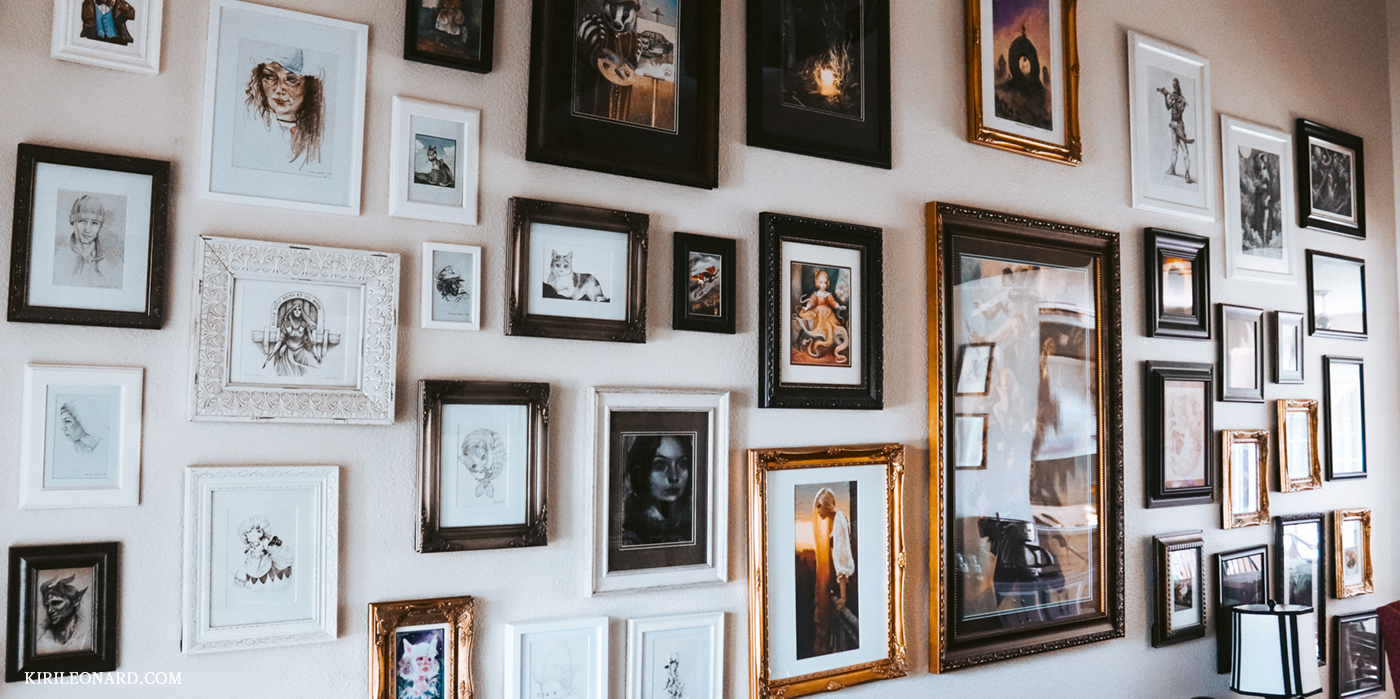
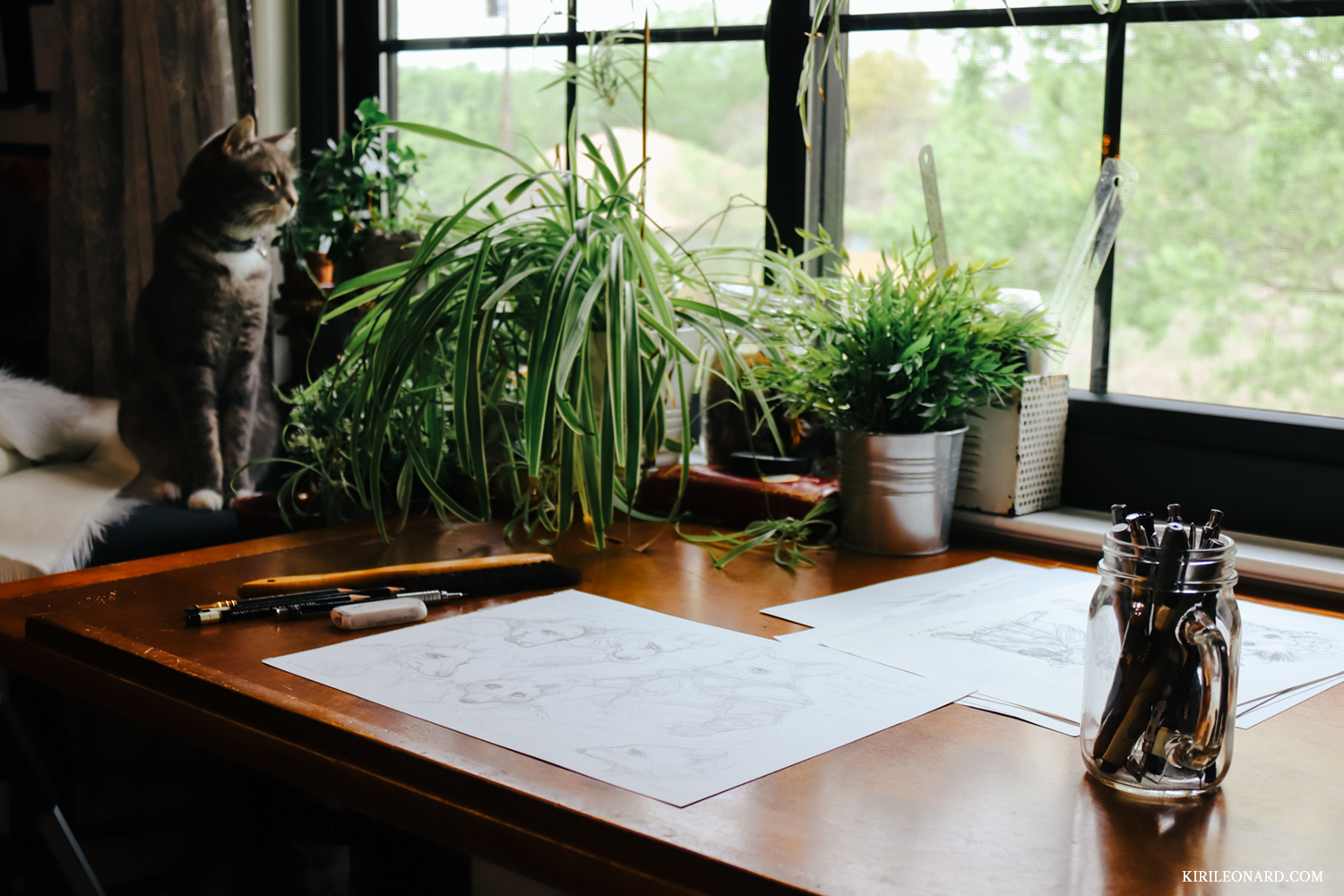
Engagement
The last point I’d like to address is how you engage with your followers and fellow artists. Be kind, be respectful. When people take the time to comment on your work, take the time to respond to them. It is social media for a reason, and a conversation should go both ways.
At the very least, say ‘Thank you’ or give their comments a like. Engaging with your followers and showing them that you genuinely appreciate them goes a long way to building relationships. Let them know they make a difference to you, and that they matter. It’s a hard life out there, and we could all use a little more kindness in our day to day. Let your work shine bright and add joy to people’s lives and be an artist they want to support, by caring about them.
You don’t have to do bright, colorful art to do this. You can be painting horror scenes and still be a kind, engaging, and fun person to interact with. If you get too many comments to manage, make ‘Thank you!’ posts instead.
Now I could go on and on with this topic forever and a day, but I think this is a good stopping point. If this was helpful and you’d like to hear more from me, please visit my website at KiriLeonard.com, and from there, you will find links to all the things.
Thank you for reading and stay safe out there!
[wbcr_html_snippet id=”25411″ title=”Wacom Tablets”]
